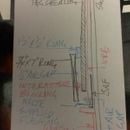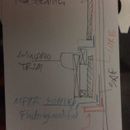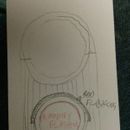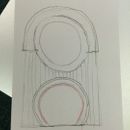Round window flashing and water management
I have a situation with a remodel on a 1970’s house with one round window that was replaced. The new window is installed, and the company had me replace siding and trim around the window. The window is an aluminum clad round (well, round with a flat section at the bottom, roughly 4″ above where the siding stops).
We started out by installing sheathing on the wall- it had been built with no sheathing- it’s a complicated wall with two round windows, and there are custom steel brackets holding everything in place (sort of).
Next we installed Grace SAF around the window, covering the flanges, then installed the manufacturer supplied aluminum flashing around the window.
Next is a layer of Tyvek that laps well over the SAF. I did not tape that to the SAF, partly because the existing round window above is, in my mind, questionable, and there is a chance for water to get behind it and thus behind the WRB- I didn’t want to trap that water in a pouch.
Next is a layer of vertical T&G cedar siding. I kept that off the window and window flashing by between 1-4″ so there would be a drainage plane when water gets through the siding and down to the window.
Window trim is made of a 1/2″ thick by 1-5/8″ wide cedar lamination and then a 3/4″ thick by 7″ wide round cedar casing made by joining sections. I put 1/2″ spacers in next to the window to keep it from bowing in. The outer ring is applied directly to the siding, but there is a 1/2″ x 5″ to 1″ x 5″ air gap behind the window casing and a continuously flashed drainage plane that opens to the flat section on the bottom of the window.
The company designer comes in after the fact and is worried that water will be trapped behind the casing and rot out the siding and casing. He wants to add another layer of metal flashing above the trim and modify the manufacturer supplied flashing because he thinks it will be guiding water behind the siding on the lower section of the window.
I disagree, but thought it would be interesting to see what others thought.
GBA Detail Library
A collection of one thousand construction details organized by climate and house part













Replies
Lavrans,
I think that your detail is OK. You've thought it through well.
Thanks, Martin.
I felt pretty confident- capillary break, drainage plane, drying potential, open to bottom... Seems to me that adding another layer of flashing will just make for poor aesthetics without enough benefit to justify the added work.